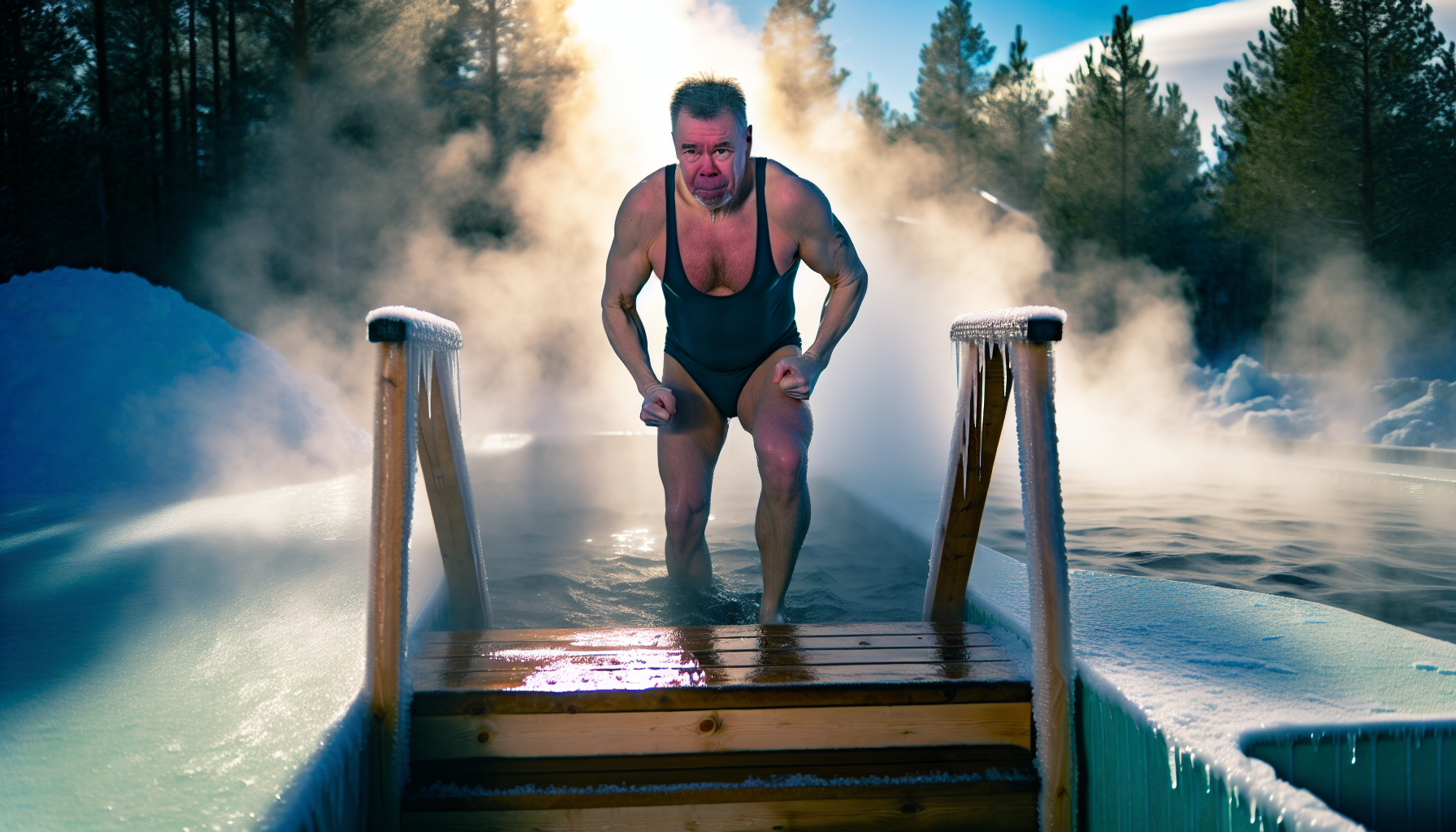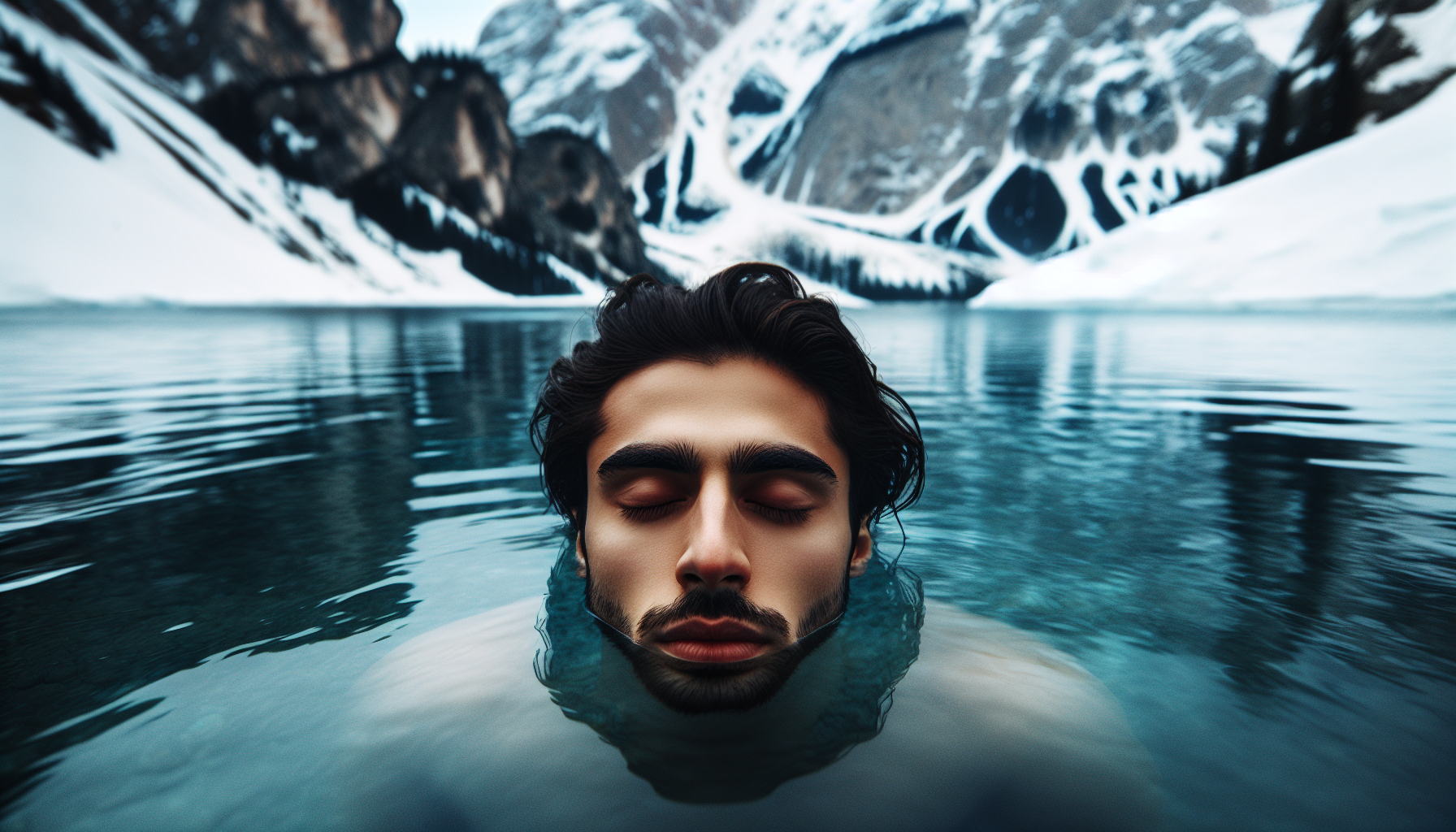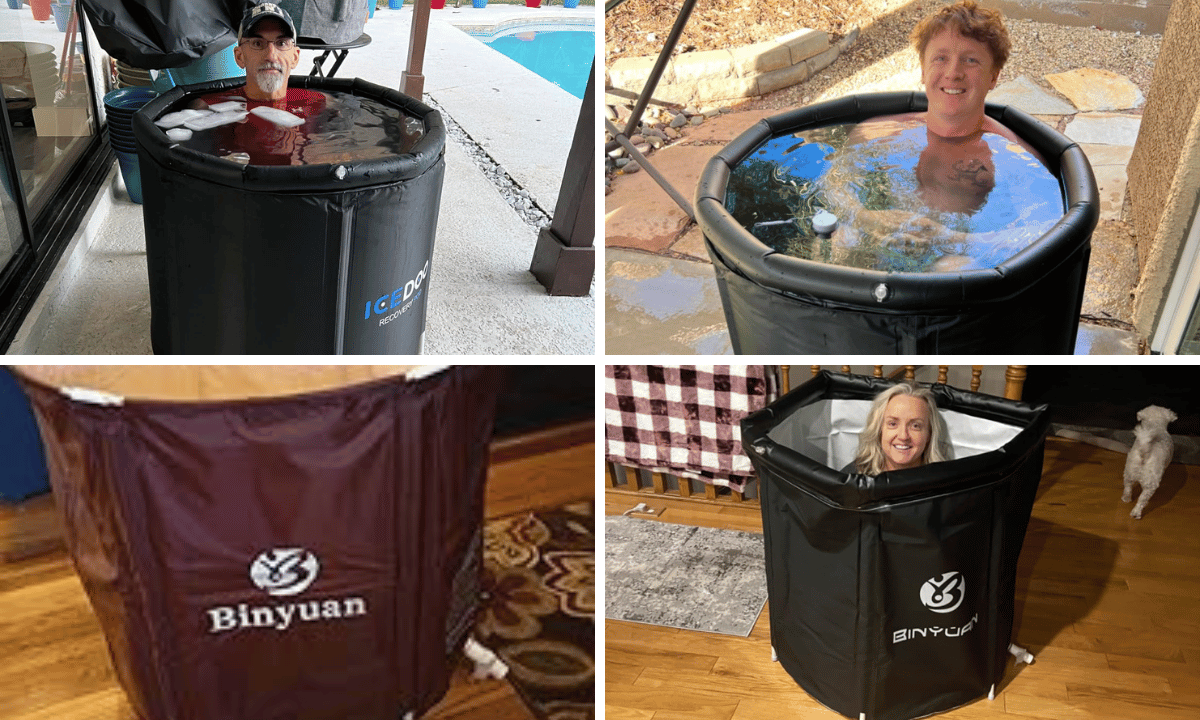You’re probably asking, “how long should you stay in a cold plunge tub?” The concise answer: anywhere from 30 seconds to 15 minutes, depending on your cold plunge prowess and comfort with the chill. In this article, we’re diving into how to pinpoint your ideal time frame and optimize the chill for health without unwanted chills from overexposure.
Key Takeaways
- Begin your cold plunge practice with short durations and slowly increase the time as your body adapts, aiming for no more than 15 minutes as an experienced practitioner to ensure safety and health benefits.
- Cold plunging can significantly benefit muscle recovery, bolster the immune system, and improve mental health, with optimal immersion times ranging from 5 to 10 minutes depending on the goal.
- Always prioritize safety by closely monitoring water temperature, watching for signs of hypothermia, and consulting healthcare professionals before starting a cold plunge routine.
Determining Your Ideal Cold Plunge Duration

Ever heard of the phrase ‘to each his own’? This holds true when it comes to determining the ideal duration for your cold plunge. The optimal duration for cold plunging can vary from 1 to 15 minutes, depending on individual tolerance and goals.
Success in cold plunging, whether you’re a beginner or a veteran, heavily relies on comprehending your body’s reaction to the direct immersion in extreme cold water.
Beginner's Approach
For those just beginning their cold plunge journey, it’s wise to remember the adage: slow and steady wins the race. Begin your cold immersion routine with a short dip ranging from 30 seconds to 1 minute to get acclimated to the cold. As your body adapts to the chilly embrace of the cold water, you can gradually increase your cold water therapy routine duration by extending each session by 30 seconds to 1 minute.
Experienced Plungers
For those well-versed in the practice, the cold plunge transitions from a daunting challenge into a revitalizing routine. You can safely extend your plunge durations and build tolerance over time by gradually increasing the time spent in the cold water, starting with manageable increments like an additional 30 seconds or one minute.
Experienced individuals can aim for a cold therapy duration of no more than 10 to 15 minutes to ensure safety and reap the maximum health benefits.
Maximizing Cold Plunge Benefits

Correct execution of cold plunge therapy can yield a plethora of impressive health benefits. From reducing inflammation to improving insulin sensitivity, the benefits of cold plunges are far-reaching. However, the burning question remains: what is the optimal duration of cold exposure for maximizing these benefits?
Muscle Recovery and Soreness

For those seeking to boost muscle recovery, a refreshing 5-10 minutes practicing cold water immersion can work wonders. Cold water immersion after strenuous exercise has been found to reduce delayed onset muscle soreness, decrease swelling, and move lactic acid away from the muscles.
Immune System Boost

Cold plunge therapy is the key to unlocking your immune system’s full potential. It helps:
- Activate the immune system
- Increase the release of white blood cells
- Reduce inflammation
- Strengthen the immune system’s response
A 10-minute cold plunge can work wonders for your immune system, helping to lower the risk of cold and viral illnesses.
Mental Health and Stress Relief

Maintaining a consistent cold plunge routine can lead to improved physical and mental health, resulting in a feeling of invigoration, a clear mind, and a better ability to handle stress. Regular exposure to cold water can alleviate symptoms of anxiety and depression while improving mood and reducing muscle soreness.
Immersing in 12°C water for 5 minutes can help reduce stress response and increase parasympathetic activity.
Safety Considerations and Precautions
Despite the tempting benefits of cold plunges, it’s imperative to remain cognizant of the potential hazards, which include:
- Cold shock response
- Frostbite
- Hypothermia
- Cardiovascular complications
Safety should always be your top priority when practicing cold water immersion.
Monitoring Water Temperature
Water temperature is among the primary factors to take into account. The ideal water temperature for cold plunge therapy is between 10-15 degrees Celsius (50-60 degrees Fahrenheit), ensuring you experience the full revitalizing impact. It’s crucial to use probe thermometers to ensure the water temperature is within the recommended range.
Recognizing Signs of Hypothermia
Be on the lookout for early signs of hypothermia such as:
- Shivering
- Slurred speech or mumbling
- Exhaustion
- Slow and shallow breathing
- Confusion
- Drowsiness
- Pale and cold skin
- Slowed heart rate
Remember, if shivering stops, it’s critical as it indicates that the core body temperature is dropping quickly.
Consulting a Healthcare Professional
Prior to embarking on your cold plunge journey, always seek the advice of a healthcare professional, particularly if you have pre-existing health conditions. They can guide you in making the most of your cold plunge routine while prioritizing your well-being.
Tips for an Effective Cold Plunge Routine
Having acquainted yourself with the benefits, risks, and precautions, it’s time to explore some strategies to enhance the enjoyment and effectiveness of your cold plunge experience.
Gradual Progression
Initiate with brief immersion periods, ranging from 30 seconds to 5 minutes, and incrementally extend the duration over several weeks, always paying attention to your body’s reaction.
Breathing Techniques
Breathing techniques during cold plunges can kickstart an increase in respiratory rate, heart rate, and blood pressure, while also lowering stress levels. Here’s a simple breathing pattern to follow during your cold plunge:
- Inhale through the nose for 4 seconds
- Hold for 4 seconds
- Exhale for 4 seconds
- Pause for another 4 seconds
Repeat this pattern throughout your cold plunge.
Consistency and Frequency
Consistency in cold plunge therapy unlocks a myriad of benefits, including a turbocharged metabolism and a fortified immune system. Embracing this practice regularly paves the way for substantial, lasting effects.
For optimal results, strive to incorporate cold plunge therapy into your weekly regimen.
Cold Plunge Alternatives
For those less inclined towards icy plunges, there exist alternative strategies to achieve comparable benefits. Ice baths, also known as contrast water therapy, offer an exhilarating alternative to cold plunges, as it involves alternating baths in warm and cold water to enhance blood circulation and provide similar benefits.
Cold showers, on the other hand, offer a refreshing way to boost blood flow through blood vessels, improve circulation, and ease muscle discomfort after a cold shower.
Summary
In summary, the key to a successful cold plunge lies in understanding your body’s response to cold water immersion, tailoring the duration to your comfort level and goals, and consistently practicing this invigorating wellness routine. Remember, safety should always be your top priority. Now, it’s time to take the plunge!
Frequently Asked Questions
Is it OK to cold Plunge every day?
Yes, you can start by cold plunging 3 days per week and gradually increase the frequency as your body adjusts. The ideal duration is 11 minutes per week.
Can you overdo cold Plunge?
Yes, you can overdo cold plunging, as it can overtax your body, especially if you're already feeling burnt out. It's important to practice cold plunging in small, health-promoting doses to avoid potential negative effects.
What not to do after cold Plunge?
After a cold plunge, it's best to avoid sudden exposure to warm environments or overdressing. Instead, warm up slowly and naturally to allow your body to adjust. So, take it easy and let your body temperature regulate itself.
Should I shower after a cold Plunge?
It's best to let your body warm up on its own after a cold plunge, so avoid showering immediately. If you're finding it difficult to warm up, then taking a warm shower after a few minutes can help raise your internal body temperature.
What is the optimal duration for a cold plunge?
The optimal duration for a cold plunge can vary from 1 to 15 minutes, depending on your individual tolerance and goals. It's best to start with a shorter duration and gradually increase it over time to suit your needs.








